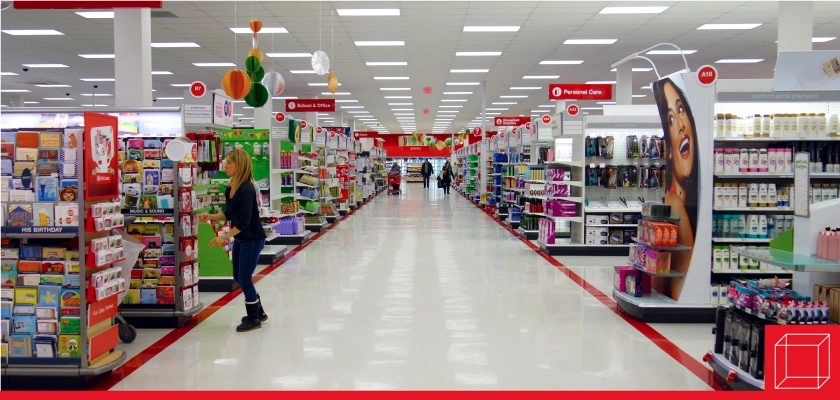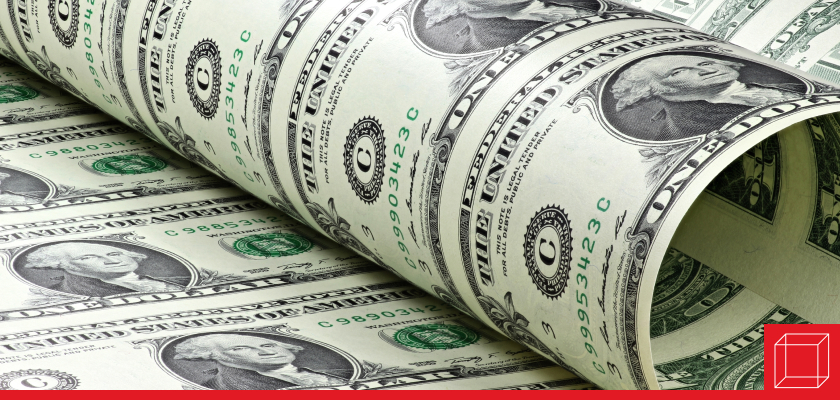Retail Theft Runs Rampant | January 2023
Shoplifting is “spreading faster than COVID” according to Bob Nardelli, former Chrysler and Home Depot CEO.

Shoplifting is “spreading faster than COVID” according to Bob Nardelli, former Chrysler and Home Depot CEO. Shoplifting is at epidemic levels with retail losses skyrocketing over the past 2 years with losses of $94.5 billion in 2021 and over $100 billion in 2022. The impact on earnings is decidedly noticed by companies such as Target which is estimated to have lost $600 million in 2022 to theft.
Individuals versus organized crime
Although some of the theft can be tied to a belief in entitlement, there is also significant involvement from organized crime. Retailers such as Kroger, Best Buy, CVS, and Walgreens have voiced concerns over shoplifting. CVS has even closed some stores in locations where losses were too large to continue to operate. Walmart’s CEO indicates the situation is so dire that many stores may have to close if the situation does not dramatically improve.
Shoplifters are generally one of two groups comprised of individuals or organized crime. Many see the opportunity in shoplifting due to the low risk of being caught in many cities coupled with little or no punishment. In California, stealing merchandise worth $950 or less is a misdemeanor with authorities often not conducting investigations. It is estimated that only 1 in 150 shoplifters are caught. While the law imposes fines and jail time for first-time offenders, there is usually no prosecution. Organized groups have gone into CVS and Walgreens and emptied the shelves with no consequences.
Why do people shoplift?
There are many reasons people shoplift, and, from an ethical perspective, the level of opportunity to do so factors in with self-service stores providing an easy way to take advantage for personal gain. It is estimated that 7-10% of the population are ethical egoists. Ethical egoism is a normative philosophy that individuals act in their own self-interest. Individuals will take advantage if the perceived risk of getting caught is low and potential benefits are seen as high.
Another motivation can be tied to the drug epidemic in this country. Drug addiction and mental health challenges contribute to shoplifting. Some shoplift for the ‘high’ or excitement of taking a risk and obtaining products for status or to provide additional income.
In addition, some people may see business as profitable, and greedy and don’t see any harm in taking advantage of the opportunity to steal and don’t perceive any harm will occur.
Why is shoplifting on the rise?
An important question is, why has there been a dramatic increase in shoplifting? Possibly unemployment coupled with economic uncertainty in conjunction with the end of government stimulus payments has contributed to shoplifting. Are we moving in the direction of an entitlement culture? Entitlement involves the feeling that a person has the right to something. It is a feeling of deserving privileges or special treatment without personal commitment or sacrifice.
The impact of shoplifting
How devastating is the impact of major shoplifting? Retailers, particularly large, publicly traded companies historically have been responsible for taking a stakeholder approach to operating their business. This means that they are concerned with not only their shareholders but also with customers, employees, suppliers, communities, etc. The deluge of shoplifting has created critical waves of disruption impacting all major stakeholders. When a store closes, employees lose their jobs, customers no longer have access to the store, tax revenue that would go to the community is lost, suppliers lose business and shareholders are impacted, with a reduction in overall sales potential.
Finding a solution
The final question is: What is the solution to our current shoplifting epidemic? To start, let’s look at a company that has not had the problems of other major retailers. Costco has some unique characteristics that have helped it stay more protected from shoplifting. For instance, to shop in a Costco, you must have a membership or be entering to apply for membership. This means that several employees are at the front of the store to screen those coming in and to check carts and receipts of those leaving.
There are some tactics that are used for shoplifting prevention: create a layout that places more vulnerable items further back in the store and place more expensive items in controlled or locked cases, have security cameras, mirrors, and signage that deters shoplifting, and train your employees to protect themselves and to be able to identify suspicious behavior.
The stakes are high if we cannot come up with an effective solution to this current epidemic. Employees and customers do not want to be at risk in these situations. It’s already difficult enough to recruit employees in today’s environment. Store responses have been to limit hours and close some locations. The solution will take a consortium of concerned individuals including law enforcement officials, to retail associations such as The National Retail Federation, along with large national retailers who are willing to step up and champion some of the best practices and new thinking on how to deal with this challenge.
Also, there needs to be more academic research to determine why individuals shoplift and how retailers can protect their stores against shoplifting while maintaining a safe environment for all key stakeholders. Maybe some stores in some of the highest-risk locations will need to rethink their business model and offer virtual stores through apps and AI with pickup at store locations. There is so much at stake, now is the time to rethink some fundamentals of brick-and-mortar retailing.
In the Classroom
This article can be used to discuss ethics (Chapter 2: Business Ethics and Social Responsibility).
Discussion Questions
Shoplifters are generally one of two groups. Name these groups and describe their differences.
Why do people shoplift and why is shoplifting on the rise?
What are the negative consequences of shoplifting that stakeholders may experience?
This article was developed with the support of Kelsey Reddick for and under the direction of O.C. Ferrell, Linda Ferrell, and Geoff Hirt.
Sources
Alice Hearing, "Ex–Home Depot CEO Warns of Retail Theft ‘Epidemic’ Ahead of Christmas Rush," Fortune, December 9, 2022, https://fortune.com/2022/12/09/home-depot-ceo-bob-nardelli-retail-theft-epidemic-christmas-walmart/
Andrew McMunn, "Walmart May Close Stores, Increase Prices Due to Theft, CEO Says," WSAZ, December 8, 2022, https://www.wsaz.com/2022/12/09/walmart-may-close-stores-increase-prices-due-theft-ceo-says/
National Retail Federation, "NRF Reports Retail Shrink Nearly a $100B Problem," September 14, 2022, https://nrf.com/media-center/press-releases/nrf-reports-retail-shrink-nearly-100b-problem



